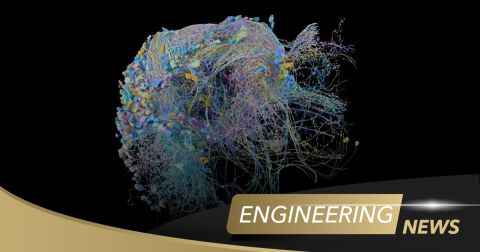The Moon by 2024, Mars by 2040, and Then?

Day by day, I become more and more hopeful that we will become a true space-faring species within my lifetime or – failing that – the lifetime of my son.
I remember how excited I was when humans first landed on the moon on July 20, 1969. I was 12 years old and I watched this incredible event on our low-definition black-and-white cathode ray tube (CRT) television in glorious grayscale with my dear old dad. (It wouldn’t have made any difference if we’d had a modern high-definition color television, because the video itself was taken in low-definition black-and-white.) My dad told me that we were privileged to be watching one of the most amazing things in human history.

While Neil Armstrong, Buzz Aldrin, and Michael Collins were still in lunar orbit prior to the final descent, my dad poured us both a tot of whisky (mine was more of a hint of a sniff of a dribble in the bottom of the glass – I’d never tasted alcohol before).
When the Lunar Module, which was called Eagle, finally detached from the Command Module, which was called Columbia, and commenced its descent carrying Neil and Buzz toward the Sea of Tranquility (or Mare Tranquillitatis in Latin), dad and I were on the edge of our seats in excitement. When Neil finally uttered those immortal words, "Houston, Tranquility base here. The Eagle has landed," dad and I raised our glasses to those heroes, to each other, and to the human race, and we quaffed our whiskey.
Once I’d stopped coughing and my eyes had stopped watering, I swore I would never drink whiskey again (in hindsight, which is the only exact science, I was lucky my dad didn’t have any large cigars to hand).
At that time, it seemed we were at the start of a new era. I would never have guessed that – at this time of writing -- the last humans to walk on the moon would be the crew of Apollo 17 in December 1972.
This was all the more galling because, then as now, I was a devotee of science fiction. I particularly loved what are now known as the “Heinlein juveniles” – the twelve novels targeted at young adults that were written by Robert Anson Heinlein and published between 1947 and 1958. In particular, The Rolling Stones (also known as Space Family Stone in the United Kingdom), depicts a family of “Loonies” (residents of the moon) who purchase and rebuild a second-hand rocket ship and set off on a sight-seeing tour around the Solar System.
Even when NASA dashed my hopes and let me down, I always held onto the dream. And now, it seems the chances are improving that we will one day become a true space-faring species. For example, NASA is currently working on implementing the President’s Space Policy Directive 1, which is “to lead an innovative and sustainable program of exploration with commercial and international partners to enable human expansion across the solar system.” One of the early steps is the plan to have astronauts land on the Moon’s South Pole by 2024, with the intention of eventually establishing a permanent settlement.

There are so many exciting possibilities here, including the fact that we’ve detected water ice on the surface of the moon, and there’s talk of using underground lunar lava tubes as bases in which to built our settlements to protect us from radiation and strikes by micrometeorites
The next major step will be to land humans on Mars. There was talk of doing this as early as 2033, but it’s now looking increasingly likely that this won’t occur until the late 2030s or early 2040s, and that’s if everything goes really, really well.
Some people doubt that we will ever get to Mars, but I think our success is a foregone conclusion, just so long as we don’t shoot ourselves in the metaphorical foot on the way; for example, by becoming an ex-species via nuclear war, pandemic, or some other means. The United Arab Emirates (UAE) has announced plans to build a habitable settlement on Mars by 2117, which is less than 100 years from now, and which seems to be a reasonable timeframe to me so long as they maintain the political will to make this happen. Not to be outdone, Elon Musk has plans to send 1 million people to Mars by 2050.
In the aforementioned book, The Rolling Stones, our heroes eventually end up in the asteroid belt where they meet a motley crew of miners. Is this realistic and, if so, just what would these folks be mining? Well, it’s interesting that, just two years ago as I pen these words, the Colorado School of Mines University debuted an advanced degree in space resources. According to the university website, “This program is targeted to train recent graduates, as well as professionals interested in expanding their knowledge and skills to address the opportunities and challenges in space resource exploration and utilization.”
As to what asteroid miners would mine, how about the fact that NASA is fast-tracking a mission to an asteroid called Psyche (I kid you not). Composed almost entirely of metallic iron and nickel, Psyche is about 120 miles (200 kilometers) in diameter, which means its potential value exceeds the current global economy by orders of magnitude.
If we get to Mars, many people believe we should keep it “as is,” especially if we discover some sort of life there. On the one hand I agree. On the other hand, I also agree with the idea of terraforming Mars to give it a breathable atmosphere and lakes, rivers, and seas. How could this be achieved? Well, how about we ask our asteroid miners to take clandestine comets hiding in the asteroid belt, attach small impulse motors to them, and set them on a course that would have them eventually crash into Mars?
“Wouldn’t this take an inordinate amount of energy?” I hear you cry. Well, perhaps not as much as you might think. Have you heard tell of the Interplanetary Transport Network (ITN)? Once again, this is a real thing -- have I ever lied to you before? (You don’t know? That’s how good I am!)

As I wrote in Impossible Space Drives and Interplanetary Transport Networks: “If you combine chaos theory with three or more bodies, such as planets [...] we can map flight paths between the various Lagrange points, where we can visualize these paths as being tubes in space. Once we get our space probe to one of the Earth-moon Lagrange points, then -- using the Interplanetary Transport Network -- it would be possible to transport it almost anywhere in the solar system using very little energy.” If we replace “space probe” with “icy comet,” then I think you can see where I’m going with this.
One of the things that is holding us back from our manifest destiny of conquering the solar system is the fact that we sit at the bottom of a deep gravity well. Not that I’m complaining about the Earth’s gravity, you understand – it’s one of my favorite physical phenomena – but it does make it difficult for us to launch things into space.
The Moon’s gravity is approximately 1/6 that of the earth. How much difference does this make? Well, consider the size of the Saturn V super heavy-lift launch vehicle required to get the Apollo missions to the Moon, for example. Now contrast this with the rinky-dinky single engine used to lift the ascent stage (upper section) of a Lunar Module off the surface of the Moon.
In Heinlein’s book, The Moon Is a Harsh Mistress, he explores the idea of using a rocket sled launch in the form of an eastward pointing catapult assist to accelerate a rocket along a track that goes up the side of a mountain before eventually heading out into space. The idea is to dramatically reduce the amount of fuel that is required to launch spacecraft.
Is this feasible? Well, the reason for all of my waffling here is that I just heard that a company called SpinLaunch is working on the idea of a football field-sized centrifuge that will spin small rockets round and round in a vacuum until they reach a speed of around 5,000 mph before hurling them into the stratosphere. Sad to relate, the author of the recent article Inside SpinLaunch, the Space Industry’s Best Kept Secret in WIRED magazine seems somewhat skeptical of SpinLaunch’s chances for success, but I prefer to keep hope in my heart.
How about you? Are you, like me, hopeful that we will one day have colonies throughout the solar system, or do you fear our species is largely condemned to spend the rest of eternity here on Earth?









